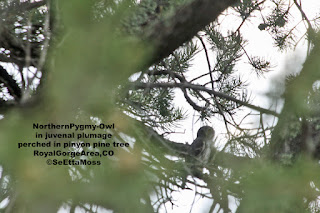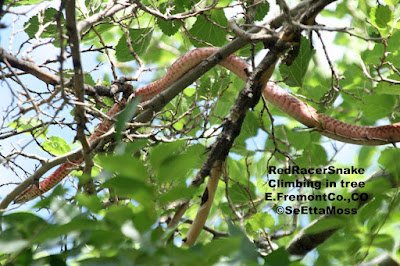So here I am, spotting the snake which was about 20-25 feet up in this tree, watching the snake slither over branches as it moved around adeptly. I had been aware previously that snakes climb trees but had never seen one until now. And this snake appeared more concerned about me than about the Bullock's Orioles that were screeching at it. In fact, this snake appeared to stop it's movement to look directly at me, as shown in the bottom pic. This was more than a little disconcerting to me--yes, I knew it was not going to jump on me, but I am frightened of snakes and to have one in tree branches above me stop to look directly at me was just kind of creepy. So why would I stay there taking pics of this snake? Just because I am afraid of something doesn't mean that I am not interested in it (I'm also afraid of heights but will stand, albeit holding onto a sturdy railing, at the edge of the Grand Canyon to take pics of it). I haven't mentioned that this snake was abou...





